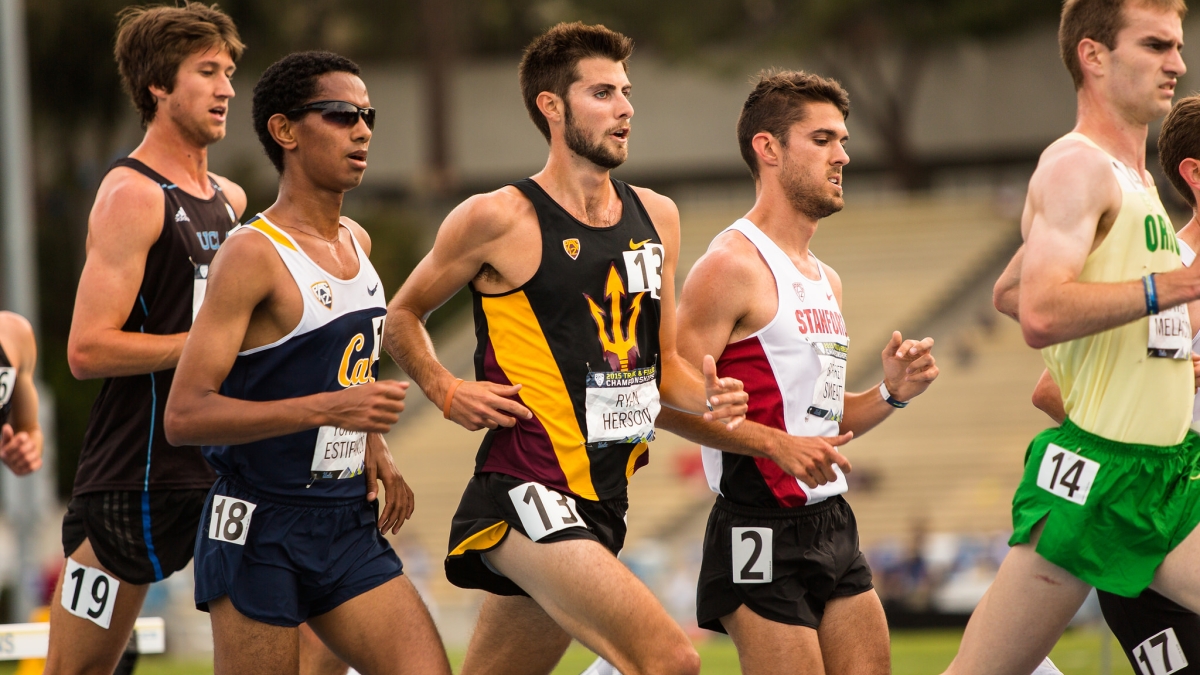Student-athletes make major strides in academic success

Ryan Herson knows all athletes have a shelf life, which is why he put as much effort into his studies as he did on the track in his four years at ASU.
“Running track was an absolute blast and I have nothing but fond memories of the sport, my teammates and my coach, but you can only participate in sports for so long,” said the 22-year-old, who recently graduated with a 3.2 GPA in exercise and wellness. “What you do in the classroom has an impact on the rest of your life.”
Herson is speaking to the NCAA’s recent recognition of ASU as being in the top-10 percentile of their sports nationally in the annual Academic Progress Rate (APR), announced May 20. Seven sports – baseball, men’s basketball, men’s golf, softball, women’s cross country, women’s tennis and volleyball – were recognized for academic achievement in the classroom, surpassing last year’s record of four teams.
The seven sports represent the most teams ASU had acknowledged in a single year in the 11-year history of the APR measurement and the second-most in the Pac-12 Conference this year. Stanford’s 13 teams represents the highest in the conference, with ASU ahead of California and the University of Southern California, which each had three teams recognized.
The news comes as no surprise to women’s tennis head coach Sheila McInerney, who has consistently been recognized with top APR scores.
“The academic environment sort of perpetuates itself because when you are in an environment that is successful, students get engaged and maximize their potential,” McInerney said. “We try and help our students find their passion academically. It’s important they come into the program, have fun, graduate and look back and say, ‘I’d do it all over again.’ ”
CJ Albertson, a 21-year-old junior from Clovis, California, who runs cross country and track for ASU, said he spoke to an academic counselor before he ever stepped foot on campus. That was impressive to him, and one of the reasons why Albertson said he chose ASU over Stanford and the University of California-Berkeley.
“I was immediately made aware of everything I needed to do academically and was set up for success through a combination of study hall, academic advisers and coaches,” said Albertson, who holds a 4.0 GPA. “I find that getting good grades is a lot like running: it’s not necessarily how hard you work but finding a way to relax and find your pace. Study hard, but also don’t forget to take time off for yourself.”
Herson said that during the season, he spent about four hours a day at practice and about six to eight hours in the classroom and study hall. He added that his teammates played a big part in his success in academics.
“There’s an environment of study here at ASU, and everyone on the team takes pride in being a scholar and athlete,” Herson said.
Kansas native Alex Hartig, 23, who throws the shot, discus and javelin for ASU’s track and field team, says her education at the university has literally paid off. With her 4.0 GPA and recent bachelor’s in accounting and master’s in taxation, Hartig has landed a job with the Big Four accounting firm KPMG in Tempe.
“From the moment I got here, I understood success in the classroom meant success outside of the classroom,” Hartig said. “Success means accountability on and off the field.”
Each year the NCAA honors select Division I teams by publicly recognizing their latest multiyear APR. The APR provides a real-time look at a team’s academic success each semester by tracking the academic progress of each student-athlete on scholarship. The APR accounts for eligibility, retention and graduation and provides a measure of each team’s academic performance.
Multiyear APRs for all Division I teams, including ASU, will be announced on May 27.